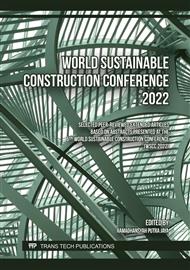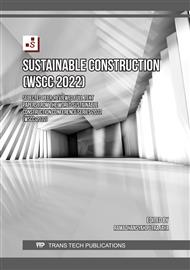p.127
p.139
p.153
p.161
p.171
p.181
p.195
p.213
p.223
High-Rise Building Inspection by Using Unmanned Aerial Vehicles
Abstract:
Building inspection is the first step before building maintenance. Without building inspections, maintenance work will be overwhelming and will result in losses in terms of time and money incurred. To determine the defect, visual inspection will be conducted as early phase of building inspection. In Malaysia, inspection on exterior enclosure of structures not usually apply because of the high cost of doing inspection and it takes a long time too. Furthermore, visual inspection usually carries out with the aid of binoculars and cameras for examining eyes. In general, the buildings that known as a high-rise building is a building that has the structure roughly seven floor or more. At such altitude, any defects and damage to the building difficult to be observe with the naked eye. Hence, the aim of this study is to propose Unmanned Aerial Vehicle (UAV) as tool that used to inspecting defect on high-rise building. Building that being choose is Urban Transformation Centre (UTC) Malacca that located at Jalan Hang Tuah, 75300 Malacca. The data collected will be analyzed using Condition Survey Protocol (CSP1 Matrix) to obtain an overall rating of the building’s condition. The process involved in this study are site visit, planning and preparation before the flight, data collection using UAV, image processing and analyzing data from image. The results of analysis, 331 defects have been identified and documented suffer from defects or faults such as cracking, scaling, spalling, peeling paint, expansion joint and mould. All defects information obtained using UAV visual inspection can help the UTC Malacca maintenance to do maintenance work. The overall condition of this building structure is 6.6, where the overall performance of the building is average.
Info:
Periodical:
Pages:
195-209
Citation:
Online since:
March 2023
Price:
Сopyright:
© 2023 Trans Tech Publications Ltd. All Rights Reserved
Share:
Citation:



